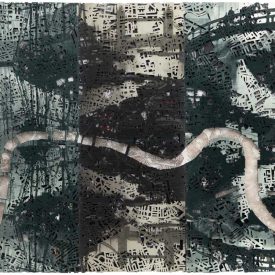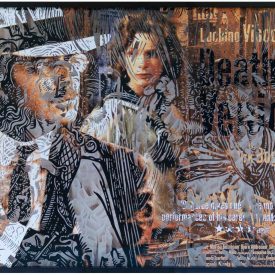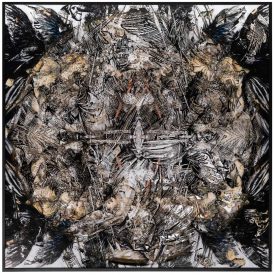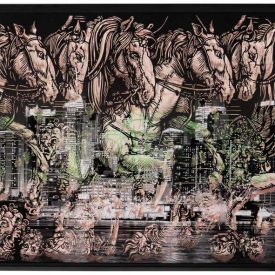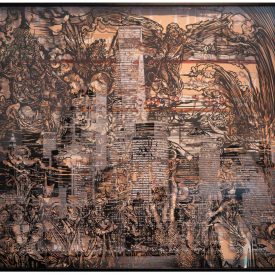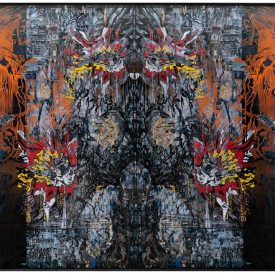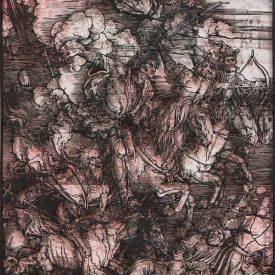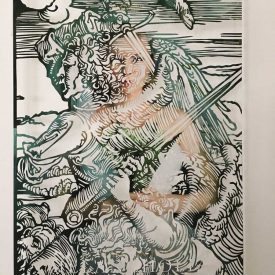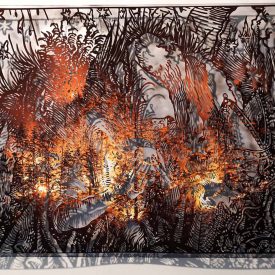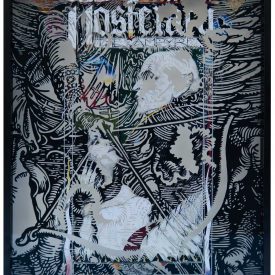This work was partially inspired by the book “The Anarchy” by William Dalrymple, which investigated the history of The East India Company in the 18th and 19th centuries.
Just one century ago the river Thames was a foul sewer along which the nation’s well organized naval and commercial ships were sent to appropriate the worlds wealth. The Empire was birthed from The City of London, which, long after the abolition of the slave trade was still financing it along with the Opium trade. Perhaps the real Heart of Darkness belonged here, not as Joseph Conrad placed it in the novel “The Heart of Darkness” which located it deep in the Congolese Jungle. The suspicion of the real location of this dark core was given voice early on in the novel, referring to London, Marlow says “And this also has been one of the dark places of the earth” or “the place of the monstrous town”
The City of London was home to the notorious East India Company, which under Robert Clive had caused the first great famine of Bengal in 1770, repeated under Churchill in 1943. The Empire grew throughout the 18th and 19th centuries and came to be comprised geographically of almost two thirds of the Earth’s surface.
Charles Dickens’ portrait of life in London in the 19th century paints an unforgettable picture of a dark squalid and violent civilization upon the banks of The Thames and it was this civilization that was unleashed upon much of the world. During the 18th century the political satirist William Hogarth created a series of engravings depicting the corruption and the debauchery of the London of the time. These images form most of the underlying imagery in the sculpture along with images of Clive of India, The East India company headquarters and Sir Thomas “Auditor” Smythe, the founder of the company. In the early 1900s at the Empire’s Zenith, Alvin Langdon Coburn created a few dark portraits of London, these images, greatly enlarged have had the street network of London cut through them and form the surface of the work. In 1903 Jack London published his book entitled “The People of The Abyss” which was an account of the horror he experienced when visiting London at that time ’No more dreary spectacle can be found on this earth than the whole of the “awful East” with it’s Whitechapel, Hoxton, Spitalfields, Bethnal Green and Wapping to the East India Docks”…the very cobblestones are scummed with grease” This book was also accompanied by photographs taken at the time in London, some of which are also incorporated into the sculpture
Along the river are cut forms from the drawings in Holbein’s “The Dance of Death” from 1538, where the power of death is seen as the great equalizer and stalks all alike.

